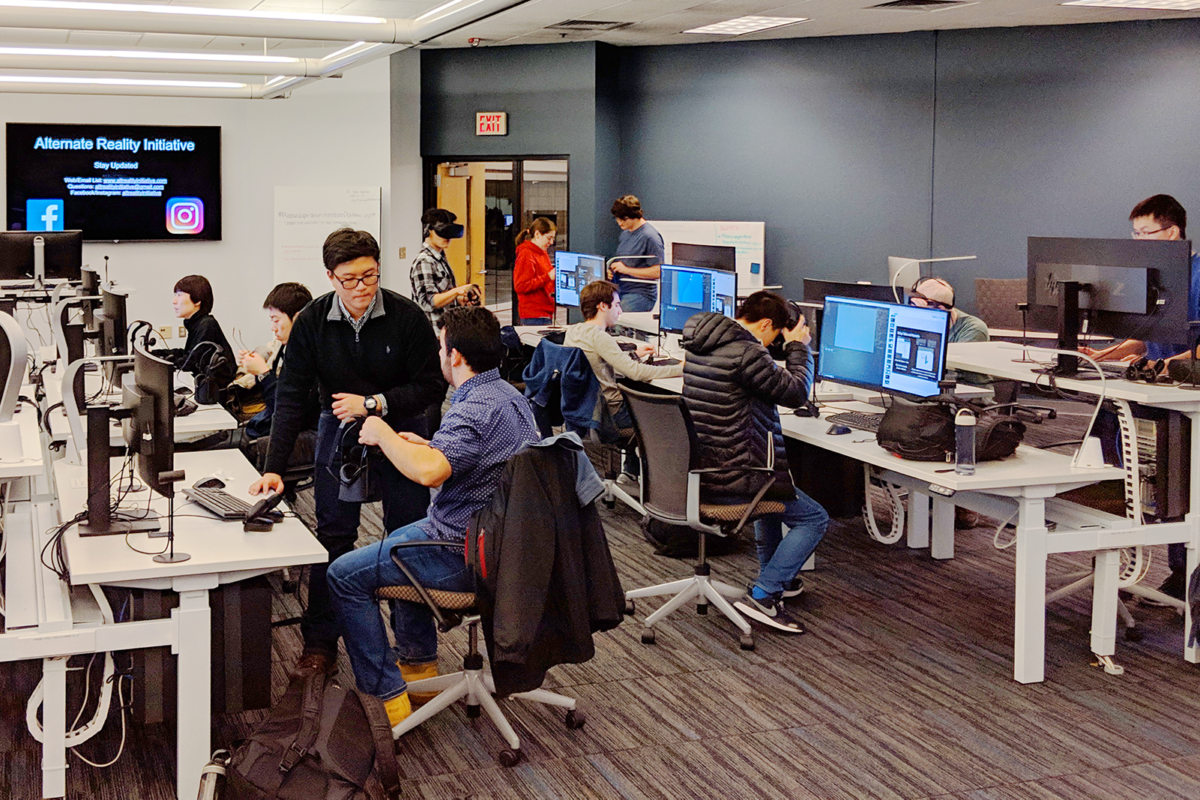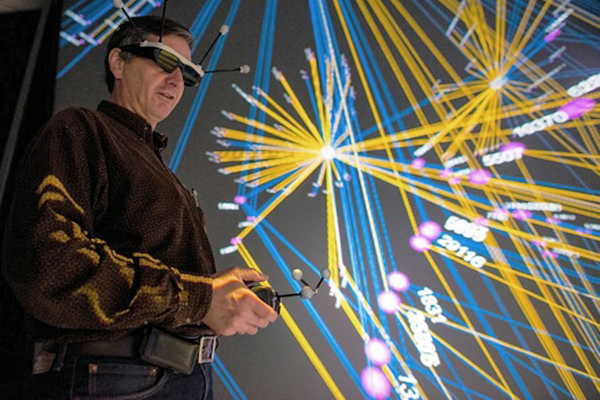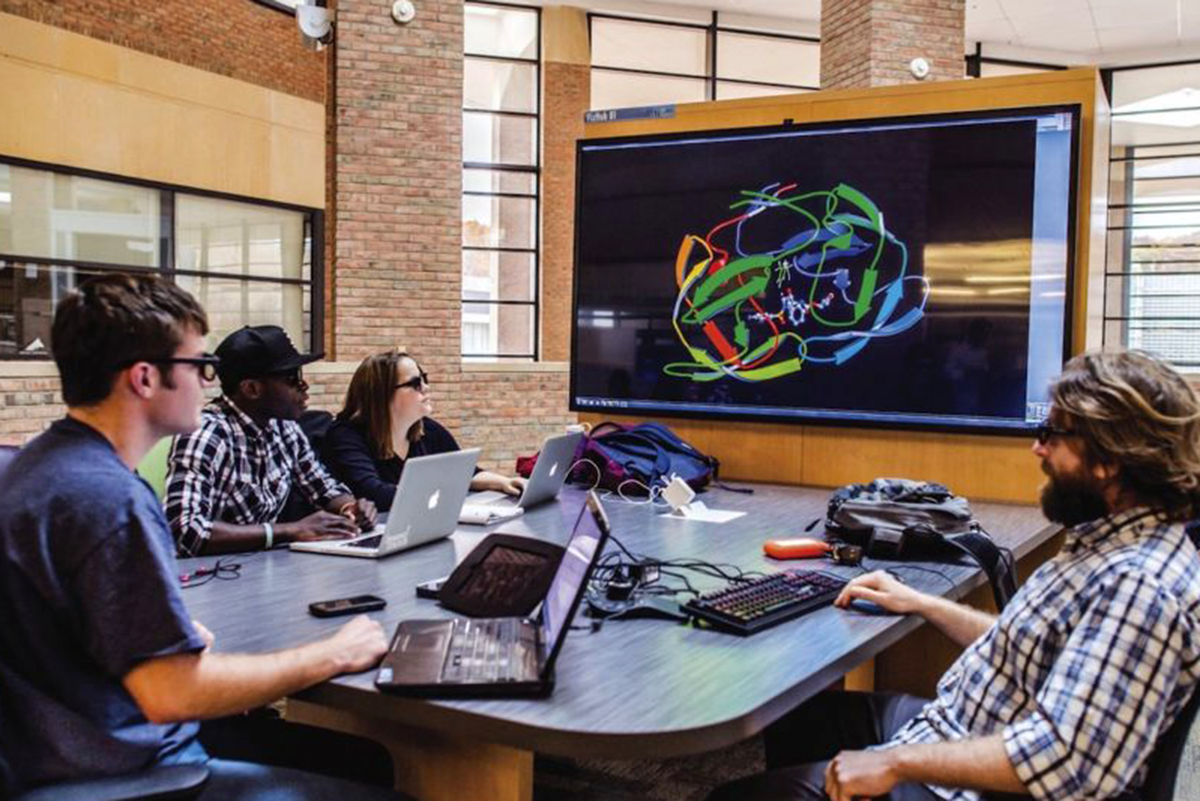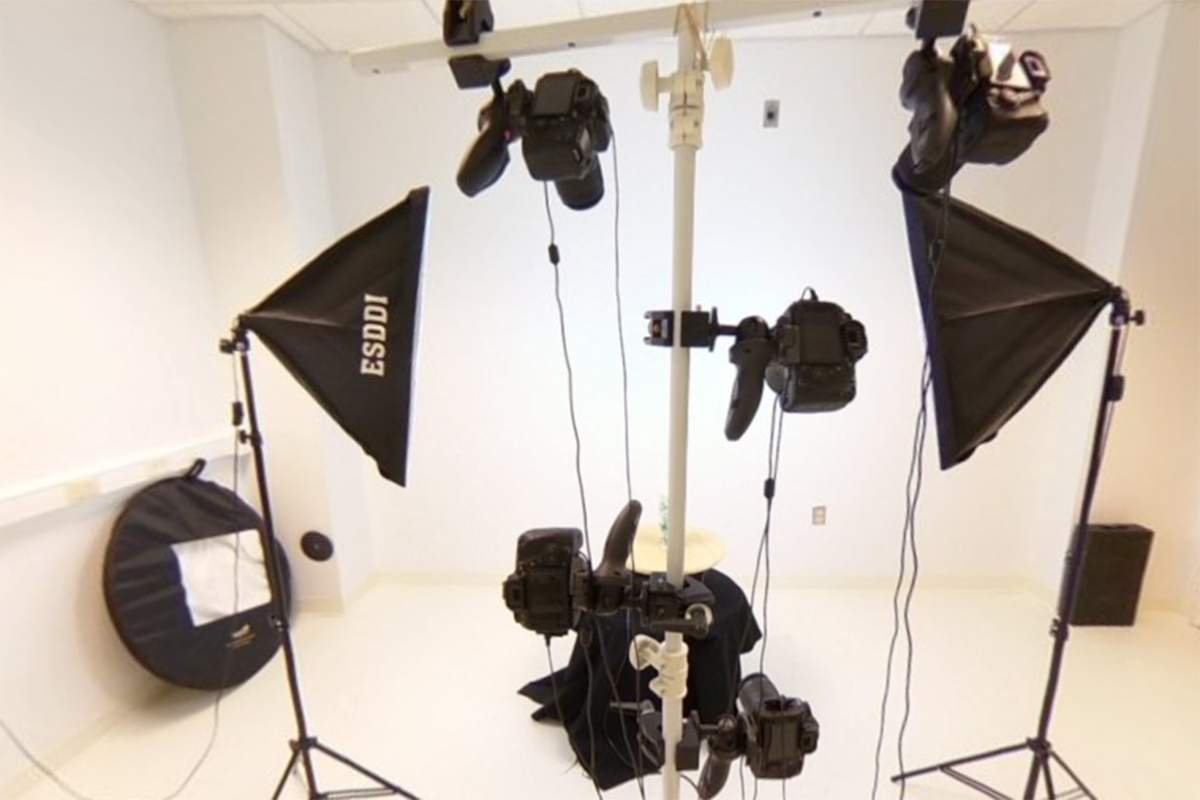3D Software Applications on DC computers
A wide selection of software applications for 3D engineering and design, graphics, special effects, spatial and data visualization are available on both CAEN-supported Windows/Linux workstations on the 2nd and 3rd floors, and on DMC-supported MacOS/Windows workstations in Groundworks and the Multimedia Rooms.
More advanced applications sets and peripherals for 3D design, visualization, development, and viewing are available in the Visualization Studio (see next entry).
Applications and peripherals for 3D printing, fabrication, and more are available in the Fabrication Studio

XR (VR, AR) Visualization Environments for Teaching, Research and Academic Projects in the Visualization Studio
The DC Visualization Studio is dedicated development environment open to all students faculty and staff that integrates the most current hardware, software, supporting infrastructure and consultant staff for creating advanced Extended Reality (XR/AR/VR) experiences.
The Visualization Studio and XR Labs are supported by the DMC Emerging Technologies Group. It is a walk-in servicelocated on the 1st Floor, Rms 1401-1405 (see Floor Plans).
The Visualization Studio is staffed Monday through Friday from 1 p.m. to 5 p.m.
Dedicated workstations
- More than 20 workstations in open collaborative work area
- Configurable virtual rooms for both wired and wireless headset and controller types
Advanced software
More than 100 applications and development engines including complete development suites from Autodesk, Oculus, Solidworks, Unity, Unreal and more: complete software list
Headset/Viewer/Controller types:
- Oculus Rift S
- Oculus Quest
- HTC Vive Pro Wireless
- Acer (Windows Mixed Reality)
- Google Daydream
- Google Cardboard
- Hololens 1 & 2
- Meta
- GoPro Fusion
- GoPro Omni
- GoPro Max
- Ricoh Theta S
- Nikon Keymission

M.I.D.E.N.
The “M.I.D.E.N” (Michigan Immersive Digital Experience Nexus) is another major Visualization Studio resource. The M.I.D.E.N is a three-dimensional physical space using stereoscopic projections and eyeglass-type viewers which can accommodate multiple users in the same physical space. It differs from head-mounted displays by enabling interpersonal action between users in a virtual space. Users can view, walk, and interact with one another and with the virtual environment in a natural manner. They can use a game controller to navigate through a larger virtual space. They are able to see their own bodies in the context of the projected virtual environment creating a highest level of immersion that effectively places you “inside” the data.for its effect but the system takes the concept much further.

Data Visualization Hubs
The Duderstadt Center has several Visualization Hubs (VizHubs) for collaborative group work, located in the mezzanine area on the second floor. These workstations can be reserved in-advance online using the U-M Study Spaces Reservation system, or on the iPad reservation systems (only available for immediate reservations) located at the VizHub themselves.
Two VizHub workstations are large collaborative workstations each with an 84’’ UHD Video Display and 10Gbit ethernet connectivity. This enables extremely fast transfer of datasets to the machine and real time visualization of extremely large datasets. These workstations support display from personal laptops, or the hub’s built-in CAEN computer.
In addition to the two large VizHubs, the second floor also contains several smaller collaborative workstations with dedicated 55’’ 1080p flat screen video displays and CAEN computers. These spaces contain enough chairs to seat five people and are sectioned off for a modicum of privacy. Personal devices may also be connected to the video display.

3D Scanning and Photogrammetry
Photogrammetry is a process for scanning existing objects using digital cameras, and using the captured photos to create 3D models. Objects, people and even places can be replicated in 3D using this method, and the models produced are suitable for 3D printing, putting them on the web, or even bringing into a game engine. Unlike other 3D scanning methods, Photogrammetry preserves photo-realistic surface color in the models it produces. This process has been used extensively in creating tangible 3D printed museum exhibits and populating video game environments with highly realistic digital assets.
Motion Capture
Multiple motion capture methods and technologies are available in the Visualization Studio for capturing motion and producing data suitable for multiple applications, including *.FBX, *.BVH and *.TRC formats.
Vicon Motion Capture
The Visualization Studio’s primary system is the Vicon Motion Capture system which is the same system used by major Hollywood special effects teams (e.g., Avatar, Planet of the Apes) to translate realistic motion onto digital characters. An 8 camera system is suitable for capturing the movement of people, robotics, and other objects. This technology is available through reservation, and involves scheduling a capturing session with the Duderstadt Center’s Motion Capture expert. After a session is complete, the resulting motion data is available in *.FBX, *.BVH or *.TRC formats.
Other capture devices include:
- Leap Motion system, ideal for hand tracking in VR environments
- Perception Neuron full body tracking suit